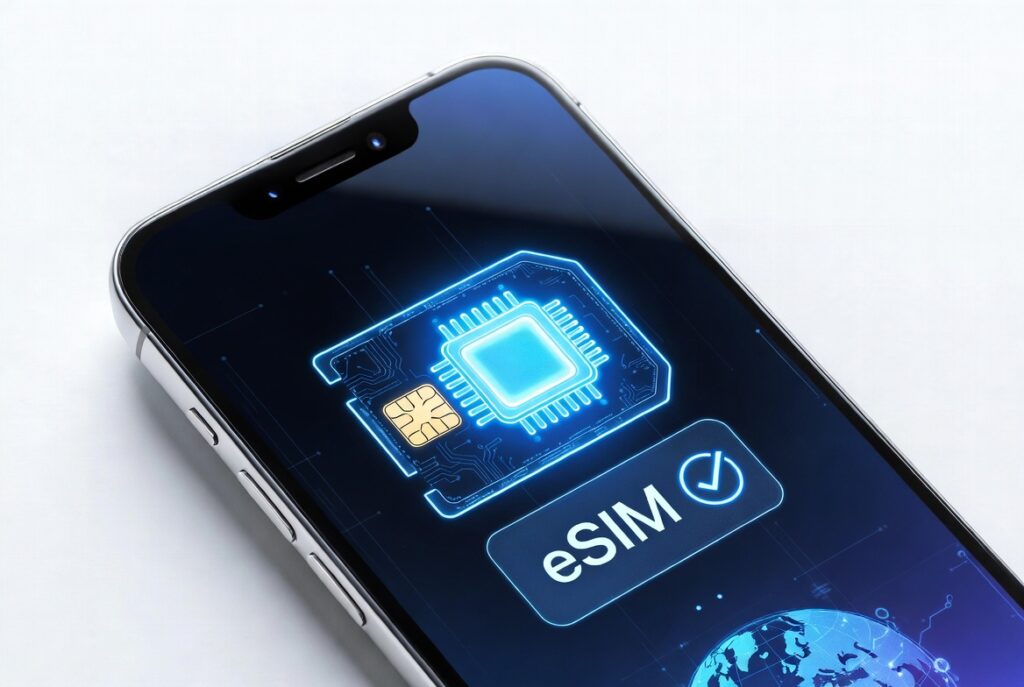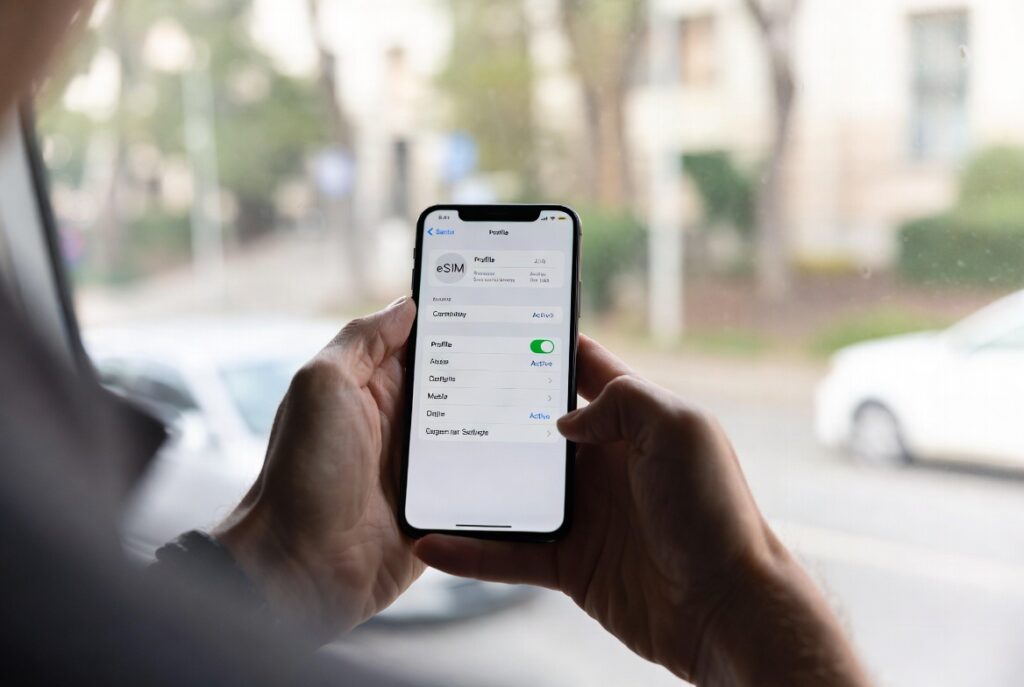If you bought any flagship phone in the last 3–4 years, you’re already carrying an eSIM — even if you’ve never activated it. Apple removed the physical SIM tray completely in the US starting with iPhone 14 (2022), Google Pixel 8/9 and Samsung Galaxy S24/S25 series are going eSIM-first in most markets, and by the end of 2025 more than 65% of new smartphones worldwide will be eSIM-only or hybrid.
So let’s settle it once and for all — what exactly is an eSIM in 2025, and why should you care?
What is an eSIM?
An eSIM (embedded SIM) is a programmable digital SIM that is soldered directly onto your phone’s motherboard. No plastic card, no tray, no tiny tool — you just download a carrier profile (usually by scanning a QR code) and you’re instantly connected.
Think of it as the “App Store for mobile plans” — install, switch, or delete plans in seconds from anywhere.
eSIM vs Physical SIM – 2025 Comparison Table
Feature |
Physical SIM |
eSIM (2025) |
|---|---|---|
Activation |
Store visit or mail |
Instant QR code or app |
Switching carriers |
Swap tiny card |
10-second download |
Multiple active plans |
Limited by tray slots |
8–20 stored profiles |
Traveling abroad |
Hunt for local SIM |
Switch in 60 seconds |
Waterproofing |
Tray = water entry point |
No tray = better seal |
Risk of loss/damage |
Very common |
Impossible (fully digital) |
Top 7 Benefits of eSIM in 2025–2026
- Instant activation worldwide
- Zero roaming shock – travel plans start at $1–$3 per day
- Keep 5–10 numbers active simultaneously
- Better phone design & water resistance
- Eco-friendly – no plastic waste
- Easy carrier switching (great for finding better deals)
- Future-proof – physical SIMs are slowly being phased out
Which Devices Support eSIM in 2025?
Smartphones
- Apple: iPhone XS and newer (iPhone 14–17 series are eSIM-only in USA, Canada, and growing list of countries)
- Samsung: Galaxy S20 and later (entire S24/S25, Z Fold/Flip series)
- Google: Pixel 3 and newer (Pixel 8/9 series heavily eSIM-focused)
- Others: OnePlus 12/13, Xiaomi 14/15, Sony Xperia 1 VI/VII, Motorola Razr 2025
Tablets & Laptops
- All recent iPad Pro/Air/Mini
- Microsoft Surface Pro 9/10/11
- Lenovo, Dell, HP, and Samsung Windows laptops with cellular
Wearables
- Apple Watch Series 3+, Ultra, SE
- Samsung Galaxy Watch 4+
How to Activate an eSIM in 2025 (30-Second Process)
- Buy a plan (home carrier or travel provider)
- Get QR code (email or app)
- Settings → Cellular/Mobile Data → Add eSIM → Scan QR Code
- Confirm → Done!
Most phones now show “Download a SIM instead?” during initial setup.
The #1 Reason People Switch in 2025: International Travel
Old way (2024 and earlier) Land in Europe → pay $10–$15/day roaming or hunt for a physical SIM at the airport.
2025 way Before boarding: install a regional travel eSIM → unlimited data for 30 days across Europe = $25–$45 total.
Best Travel eSIM Providers in 2025–2026 (Real User Favorites)
Based on user reviews from Trustpilot, Reddit, and travel forums (like Nomadic Matt and TechRadar), here’s our top 10 list of travel eSIM providers. These are ranked by coverage (200+ countries), reliability, pricing, and user satisfaction scores. All offer instant QR activation and data-only plans (voice/SMS via add-ons where available). Prices start from $1–$5/day for 1GB.
-
Airalo – The original king: 200+ countries, best app for beginners. Users love the free 1GB trial in select spots. (Trustpilot: 4.7/5, 100k+ reviews)
-
Holafly – Unlimited data hero: Perfect for heavy streamers. Covers 160+ destinations with hotspot sharing up to 1GB/day. (Trustpilot: 4.5/5, 65k+ reviews)
-
Saily – Budget + security champ: From NordVPN makers, with built-in VPN, ad-blocker, and virtual location. Affordable global plans. (Trustpilot: 4.7/5)
-
Nomad – Asia/UK specialist: Cheapest for short trips, with a generous 1GB/3-day free trial in 48 countries. Great for digital nomads. (User favorite on TechRadar)
-
Ubigi – Multi-device pro: No top-up WiFi needed, unlimited hotspot, and annual plans. Covers grouped regions like Europe/Asia. (Freaking Nomads top pick)
-
Jetpac – Speed-focused: Fastest 5G in Europe/Asia, pay-as-you-go flexibility. Users rave about no-data-expiry. (Trustpilot: 4.6/5)
-
KnowRoaming – Worldwide basics: 150+ countries, easy transfers between phones. Data-only but super reliable for long trips. (PCMag Editors’ Choice)
-
Roamless – Pay-per-use innovator: Add funds, no expiry – ideal for unpredictable travel. Covers 200+ countries. (Cloudwards top for flexibility)
-
GigSky – Enterprise-level: Strong in Americas/Africa, with voice/SMS options. Trusted by business travelers. (Calilio recommended)
-
aloSIM – Value hunter: Promo codes galore, regional bundles under $20/month. Simple for first-timers. (CNBC Select pick)
Frequently Asked Questions (2025 Edition)
Can I still use a physical SIM if my phone has eSIM?
Yes — most phones support both (Dual SIM Dual Standby).
What if a country doesn’t support eSIM yet?
Extremely rare in 2025. Worst case: carry one cheap physical SIM as backup.
Can I convert my current physical SIM to eSIM?
Yes — free conversion offered by almost every major carrier (Vodafone, EE, O2, Verizon, T-Mobile, Jio, Airtel, etc.).
Is eSIM more secure?
Yes — no physical card to clone or lose.
Final Verdict: Should You Switch to eSIM in 2025?
If you travel even once a year, hate roaming fees, or just want the most future-proof setup — yes, switch today.
Physical SIMs are becoming the floppy disk of mobile connectivity.
Last updated: December 2025 Got a trip coming up? Drop your destination in the comments — happy to recommend the best eSIM deal!











